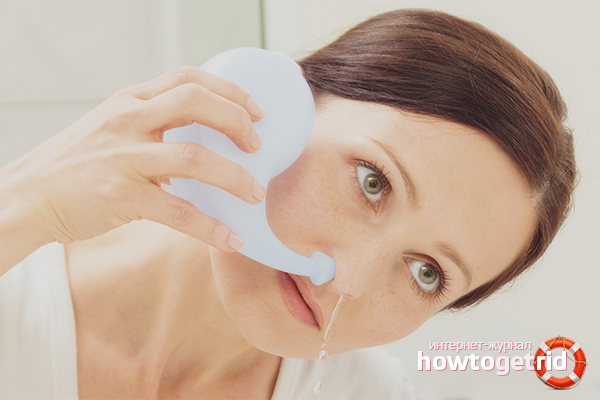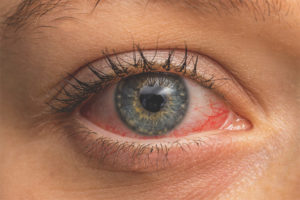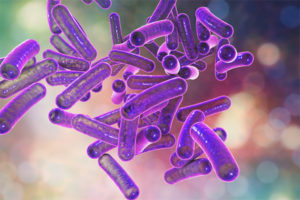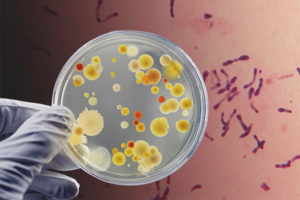The content of the article
Normally, the vessels of the nasal mucosa are quite elastic, and can, if necessary, increase and decrease in size. Thus, the body controls the amount of inhaled air, depending on the temperature and humidity in the room. However, if these vessels lose their elasticity, the nasal concha swell, disrupting normal nasal breathing. Vasomotor rhinitis appears, which significantly worsens a person’s quality of life - he cannot eat normally, sleep. But why do vessels lose their tone? Why does vasomotor rhinitis occur?
Causes of vasomotor rhinitis
Unlike a common cold, vasomotor rhinitis is not a consequence of inflammation or the virus entering the body. Here are a few factors that can become a trigger for the development of the disease.
- Hormones. A change in the hormonal background in a woman provokes a change in the elasticity of the vessels. Vasomotor rhinitis is often observed in pregnant women and adolescents, it can occur when taking oral contraceptives.
- Vasoconstrictor drugs. Frequent use of vasoconstrictive sprays and drops from the common cold leads to the fact that the vessels lose their ability to recover, they cease to be elastic and mobile. Prolonged use of vasoconstrictor drugs leads to drug addiction, which is quite difficult to get rid of.
- Medication. Some medicines also affect vascular tone. It can be antidepressants, pills for potency, drugs for hypertension, anti-inflammatory drugs.
- Vegetative-vascular dystonia. With this disease, blood vessels suffer not only in the nasal cavity, but also in the whole body.
- Allergy. Another common cause of vasomotor rhinitis is an allergic reaction. The prolonged effect of allergens on the mucous membrane atrophies the walls of blood vessels, they cease to be elastic and mobile.
- Features of the nasopharynx. Various polyps in the nose, adenoiditis, injuries, spikes and ridges of the nasal septum can cause the development of vasomotor rhinitis.
- External factors. Symptoms of vasomotor rhinitis are aggravated by various pungent odors, from tobacco smoke, with increased humidity and low temperature. Rhinitis can be activated after drinking alcohol, after spicy and salty foods. Even psychosomatics act on the development of the disease - stress and depression enhance the symptoms of the disease.
With vasomotor rhinitis, a person cannot fully breathe through the nose, the mucous membrane swells, often only on one side of the nose. As a rule, this is observed at night - a person lies on a pillow and lays only one nostril, the one from below. In addition, itching, sneezing, and profuse discharge from the nose appear that drain down the back of the nasopharynx. Mucus irritates the diaphragm receptors, night cough may appear.
Drug treatment of vasomotor rhinitis
In many ways, the treatment of vasomotor rhinitis is due to the elimination of the main factor that contributed to the development of the disease. If a runny nose occurs due to an injury or curvature of the nasopharynx, surgical intervention is required to restore normal air passage. It is possible to improve the functioning of blood vessels after prolonged use of vasoconstrictor drugs only by canceling them. Do not use these products anymore if you want to at least someday start breathing on your own.
In case of an allergic rhinitis, it is very important to identify the allergen that provoked swelling of the mucosa, itching, sneezing and a prolonged course of mucus from the nose. Most often these are down pillows, dust, pollen of plants and flowers, citrus fruits, pet hair. You can get rid of this with antihistamines. Most often, a long-term intake of these drugs is required in order to completely remove the allergen from the body.
In addition, the doctor may prescribe physiological treatment. Laser is very effective against vasomotor rhinitis. Rays directed to the nasal concha remove inflammation, reduce swelling, improve the elasticity of blood vessels and contribute to their regeneration. In addition to laser therapy, electrophoresis is also used. Low-frequency impulses stimulate blood circulation in the nasal concha. If conservative treatment does not help, surgical interventions are prescribed, in which they make blockades and injections with drugs.
So that vasomotor rhinitis does not return, it is very important to monitor the quality of your life. It is necessary to strengthen the immune system with proper nutrition, sufficient physical activity, hardening and good rest. Avoid getting into stressful situations, often stay in the fresh air, normalize your hormonal levels, take vitamins. It is very important to get rid of infectious foci in the nasopharynx - cure tonsillitis and caries. By following these simple rules, you can reduce the risk of vasomotor rhinitis.
Flushing and inhalation
Against a runny nose of any nature, washing is good. They can be done in the office of an ENT doctor on a special vacuum apparatus or at home, using an ordinary small kettle for this. The washing solution can be anything - simple salt water, a decoction of herbs or antiseptic compounds (in severe cases). Pour the solution into the kettle and place the spout on the nostril. Lower your head slowly to the side so that at some point the water begins to pour out from the opposite nostril. For young children, washing is not difficult, just drop a couple of drops of saline into each nostril with a pipette.
If the nose is so blocked that the water does not pass when rinsing, take inhalations. Add eucalyptus and peppermint essential oils to the hot water and inhale the healing fumes. Essential oil, getting on the mucous membrane, instantly relieves swelling. Therefore, after inhaling mint and coniferous aromas, it becomes easier to breathe.
Folk remedies for the treatment of vasomotor rhinitis
The home medicine piggy bank also has many secrets that will help you quickly remove swelling of the mucous membrane, get rid of stuffiness and itching, and stop the flow from the nose.
- Honey water and birch sap. Dissolve a teaspoon of honey in a glass of warm water. Rinse your nose with this compound in the morning and evening. After washing, soak a cotton swab in birch sap and treat the mucous membrane. Birch sap is harvested only in the spring, but it is easy to save for the whole year, just by freezing the liquid.
- Fir oil. It perfectly relieves nasal congestion and opens nasal breathing. In addition, fir has antiseptic properties.
- Massage. Strengthen circulation in the nasal concha with massage. For greater effectiveness, you can massage the wings of the nose, using the Asterisk balm.
- Kalanchoe. Put a few leaves of this plant in the freezer so that it is convenient to get juice from it. Grate the frozen leaf and squeeze the healing juice. Dilute it in half with water and drip a few drops into each nostril. You will begin to sneeze a lot - this is normal. Thanks to sneezing, the body gets rid of the allergen, cleansed of accumulated mucus. After that, you need to drip a drop of sea buckthorn oil into each nostril to relieve swelling and soothe the mucous membrane.
- Garlic, vegetable oil and carrot juice. Vegetable oil must be heated in a water bath. Mix warm oil in equal proportions with the juice of garlic and carrots. The prepared product needs to be dripped into each nostril, 1-2 drops every three hours. Every day you need to cook a fresh composition, its shelf life is not more than 10 hours. Garlic has an antiseptic effect, carrots relieve swelling, and oil moisturizes and soothes the mucous membrane.
In addition to treatment, it is very important to follow a diet. Eliminate sweet and fresh-milk products from your diet that provoke increased mucus production.
If vasomotor rhinitis occurs in a pregnant woman, self-medication in this case is unacceptable. In this condition, treatment is aimed at alleviating the condition of the expectant mother. Remember, during pregnancy, you can not use antibiotics and vasoconstrictor drops, especially in the first trimester. After birth, female hormones return to normal, and the problem of vasomotor rhinitis disappears, as does the disease itself.
Video: chronic runny nose (vasomotor rhinitis)











Submit